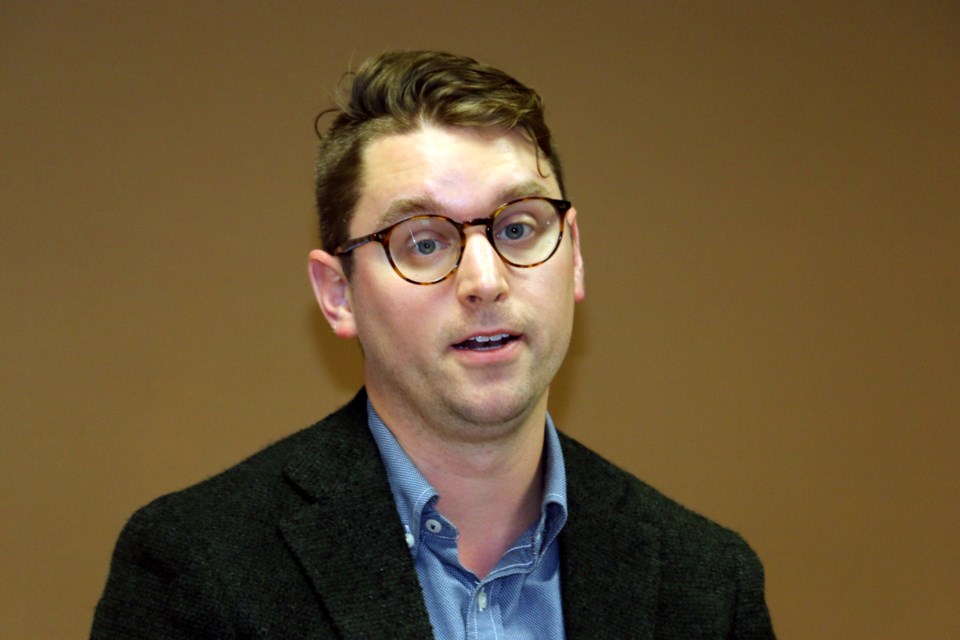The fight against privatizing health care in Ontario continues. A new report was released in Sudbury Monday that says there will be a serious negative impact caused by the Doug Ford Conservative government plans for Ontario's public hospitals and patients.
The details were laid out during a news conference held at the Greater Sudbury main public library branch on Mackenzie Street Monday afternoon by health policy researcher Andrew Longhurst and Michael Hurley, president of the Ontario Council of Hospital Unions (OCHU).
Longhurst said the Ontario government is setting out to use more privately-owned, for-profit businesses to carry out surgical procedures and diagnostic imaging procedures, such as MRIs and CT scans outside of hospitals.
His 56-page report, At What Cost, is critical of the idea and said the Ontario Conservatives are playing with the numbers to make it seem that wait times are too long in some health care sectors and that more needs to be done to improve the delivery of health care to the people.As an example, Longhurst's report said Ontario has some of the best wait times in Canada for getting an MRI or a CT scan for diagnostic imaging, or hip and knee replacement surgeries. He said the Ontario government is not giving a true accounting to rationalize the move to private surgery or imaging clinics.
"And what we see among hip and knee procedures is that Ontario actually had the shortest wait times for hip and knee replacements in the country. It also had among the best wait times and shortest wait times for MRI and CT scans. And these are the areas where the Ontario government is seeking to privatize," Longhurst said in Sudbury.
He said that doesn't mean the wait times can't be better.
He said the ideal choice would be to ramp up empty operating rooms and start performing more surgeries in local hospitals.
In Sudbury it was revealed in May that Health Sciences North was only using 13 of its 17 operating rooms. At the time, the hospital said part of the reason for that was the shortage of physicians and other health care professionals.
Longhurst said he found it "puzzling" that the province is willing to contract out CT scans and MRIs when there does not appear to be any significant problem.
"It does raise a lot of questions about why the government would privatize diagnostic imaging when those are actually the ones with the shortest wait times," he said.
While he would not speculate on any reasons, Longhurst said it is well known that diagnostic imaging is something that can be done in the private sector for a profit.
"But the sensible approach is to fund the public system and improve it, rather than destabilize public hospitals," said Longhurst. He said the concern is that private clinics will lure away more and more doctors and nurses who work in hospitals.
He said he and Hurley have been traveling across Ontario to try to sway public opinion away from more privatized health services. He said Ontario seems to be moving toward the Alberta health care model which has already privatized many health services.
Longhurst said the experience in Alberta has made wait times worse there..
"And what we see from that (research) literature and that policy experience here in Canada, and internationally, is that private for-profit delivery, worsens public sector staffing shortages, and destabilizes public hospitals," said Longhurst.
Len Gillis covers health care as well as mining news for Sudbury.com .
